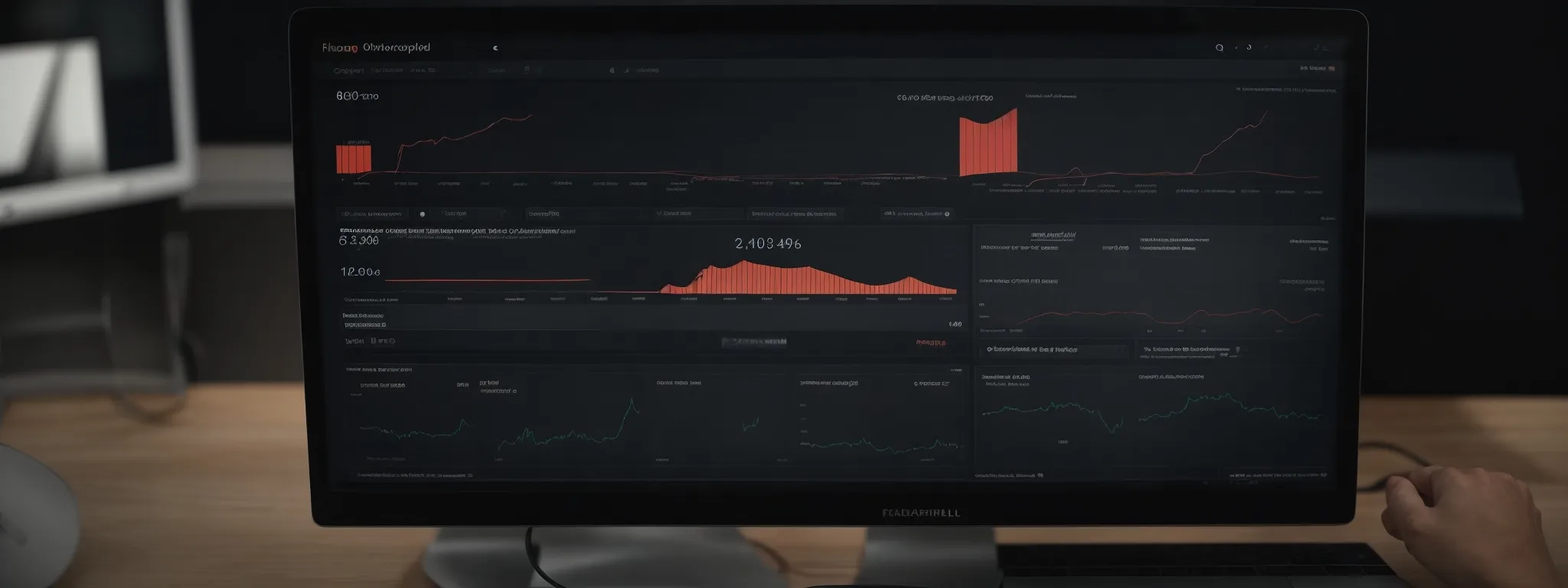Google Launches New Tool That Grades A Site’s SEO Implementation
Google Introduces Innovative SEO Grading Tool for Websites In the dynamic realm of digital marketing, Google’s latest launch—a cutting-edge SEO grading tool—offers a game-changer for website owners […]
Google Introduces Innovative SEO Grading Tool for Websites
In the dynamic realm of digital marketing, Google’s latest launch—a cutting-edge SEO grading tool—offers a game-changer for website owners and SEO professionals alike.
This sophisticated platform promises to sharpen the competitive edge by providing clear insights into website optimization.
Seamlessly blending user experience with algorithm intricacies, it empowers stakeholders to refine their SEO strategies effectively.
As industry players keenly adopt this tool, understanding its mechanics and leveraging its capabilities becomes paramount for staying ahead.
Keep reading to unlock the full potential of Google’s innovative solution for enhancing your website’s visibility and performance in today’s digital landscape.
Key Takeaways
- Google’s SEO Grading Tool Offers a Graded Evaluation of Websites Adhering to SEO Best Practices
- The Tool Integrates With Google Analytics, Search Console, and PageSpeed Insights for Comprehensive SEO Strategy
- Google’s Tool Encourages a Data-Driven, Nuanced Approach to SEO, Focusing on Aspects Like Keyword Optimization and User Experience
- LinkGraph’s SEO Services Utilize SearchAtlas SEO Software to Analyze Grading Tool Feedback and Enhance Client Strategies
- Adapting to Google’s SEO Grading Tool Requires Vigilance to Algorithm Updates and a Commitment to Evolving SEO Trends
Understanding Google’s New SEO Grading Platform

In the ever-evolving landscape of digital marketing, businesses and content marketers are perennially seeking ways to measure and elevate their website’s standing in search engine results pages (SERPs).
Recognizing this demand, Google has launched an innovative SEO Grading Tool designed to provide comprehensive insights into a website’s optimization status.
Positioned to seamlessly integrate with an array of existing Google services, this tool heralds a new era of SEO scrutiny, empowering site owners and SEO professionals with actionable data to finetune their digital assets for maximum visibility and engagement.
Overview of the SEO Grading Tool’s Purpose
The introduction of Google’s SEO Grading Tool pivots around offering a systematic approach for website analysis. The tool serves to provide a graded evaluation on how well a website adheres to the accepted SEO best practices, a crucial aspect for digital marketers and site owners.
Functioning as a guide, the tool highlights areas where improvements can be implemented: from on-page SEO to the intricacies of link building. Its purpose extends to furnishing users with a clear blueprint for optimizing their web presence:
- Identifying on-page optimization gaps that may hinder performance in Google search results.
- Supplying detailed feedback on link-building effectiveness, considering the impact of both quantity and quality of inbound links.
- Assessing the overall user experience with a focus on mobile responsiveness and page loading speed.
How the Platform Integrates With Existing Google Services
Google’s SEO Grading Tool represents a quantum leap in optimization technology, working in concert with a suite of Google’s established services. It synergizes with Analytics for traffic analysis, Search Console for performance tracking, and PageSpeed Insights for gauging site speed – all critical components for a holistic SEO strategy.
The integration streamlines the SEO process, enabling webmasters and marketers to access a centralized dashboard that correlates data across multiple platforms. This assimilation allows for a real-time assessment of a website’s SEO health, leading to informed decisions and swift implementation of necessary adjustments:
- Analytics integration facilitates a deeper dive into user behavior and website traffic patterns.
- Search Console data provides clarity on search queries and indexing status, essential for SEO adjustments.
- PageSpeed Insights offers actionable recommendations to enhance the technical performance of web pages.
How to Use Google’s SEO Grading Tool Effectively

With Google unveiling its avant-garde SEO Grading Tool, website administrators and digital marketing strategists now possess a powerful resource to dissect and augment their sites’ SEO stature.
Embracing this tool requires users to grasp its operational nuances fully—ranging from initial access to interpreting the subsequent performance grades.
A firm understanding of these components will not only illuminate the path to optimization but also will arm users with the criteria that Google’s algorithms apply to assess and rank web pages.
This subsection is dedicated to unlocking the potential of the grading tool, with emphasis on providing lucid step-by-step guidance for accessing it, coupled with astute advice for decoding the nuanced SEO grades bestowed upon your digital properties.
Step-by-Step Guidance on Accessing the Tool
To initiate the process of utilizing Google’s SEO Grading Tool, users must first navigate to the appropriate section within Google Search Console. Upon locating the tool, they need to select the specific property they wish to evaluate, ensuring they have the required access permissions to proceed with the analysis.
After entering into the SEO Grading Tool interface, site administrators are prompted to begin the assessment by clicking on the ‘Start Grading’ option. The system meticulously scans the selected website, using sophisticated algorithms to render a comprehensive grade reflective of the site’s adherence to optimization protocols.
Tips for Interpreting Your SEO Grade
Interpreting your SEO grade from Google’s grading tool is akin to reading a roadmap for your website’s success journey. It takes a keen eye to understand the nuances in the grades received: a distinction between the grades reveals not only the current performance but also indicates what specific elements require attention to achieve optimal results. These grades, ranging from A to F, offer clear indicators regarding the areas where a website excels or falls short.
An insightful analysis of your own SEO grade necessitates a strategic perspective. Recognizing a lower grade in any aspect, whether it be page content, link building, or user experience, serves as an impetus to prioritize and tackle those specific shortcomings. A higher grade, on the other hand, confirms that a website is on the right path and encourages the maintenance and refinement of current strategies.
| SEO Aspect | Grade | Interpretation |
|---|---|---|
| Page Content | A | Content is well-optimized for relevant search queries and readership engagement. |
| Link Building | C | Link profile needs improvement; consider diversifying sources and increasing quality backlinks. |
| User Experience | B | Site is user-friendly but could benefit from further enhancements in speed and mobile responsiveness. |
The Impact on SEO Practices and Strategies

With the advent of Google’s new SEO Grading Tool, professionals in the realm of search engine optimization are poised to witness a paradigm shift in the methodologies employed to enhance website rankings.
Companies and SEO experts must now recalibrate their strategies to align with the intricate metrics that define this innovative grading system.
The introduction of Google’s refined evaluation criteria is set to ripple through the industry, prompting a reevaluation of current practices and an adoption of new techniques to meet the evolved standards of website optimization.
Changes to Expect in SEO Approaches
As the SEO Grading Tool gains traction, professionals are poised to modify their tactics, focusing on precise areas that the grading system deems critical. This shift will likely elevate the importance of a more nuanced approach towards on-page optimization, technical SEO, and content relevance, marking a departure from broad, generic strategies.
This evolution will direct SEO specialists to engage with content and technical elements on a granular level, devising strategies that are tailored to the individual components of Google’s grading criteria. Agencies and site owners can anticipate a greater emphasis on data-driven decision-making, ensuring that each adjustment is reflected positively in their website’s SEO grade.
Adapting Your Strategy to Align With Google’s Grading
In light of Google’s newly minted SEO Grading Tool, businesses must fine-tune their digital strategies to satisfy the intricate variables that consolidate into their SEO grades. Such refinement involves a rigorous analysis of grading feedback, whereupon businesses can pinpoint deficiencies and augment their web pages, ensuring that every element, from meta tags to mobile responsiveness, adheres to Google’s defined parameters.
For SEO service providers such as LinkGraph, these advancements underscore the imperative to offer sophisticated, data-grounded guidance that transcends conventional optimization techniques. With the aim to enhance their clients’ grades, SEO experts need to leverage tools like SearchAtlas SEO software, devising comprehensive strategies that bridge the gap between current website performance and the pinnacle of Google’s SEO expectations.
Maximizing Your Website’s SEO Score With Google’s Tool

With Google’s introduction of its transformative SEO Grading Tool, webmasters and digital marketers are presented with an unprecedented opportunity to proactively enhance their websites’ visibility and searchability.
This section delves into the pivotal attributes assessed by the tool, alongside the quintessential methods that can elevate a site’s SEO score.
Underscoring the key features that influence search rankings and the adherence to industry best practices, the forthcoming discourse seeks to arm practitioners with the knowledge needed to refine their web presence and ascend Google’s digital hierarchy.
Key Features That Influence Your Site’s SEO Score
Google’s SEO Grading Tool revolutionizes how website performance is gauged, emphasizing a multifaceted approach to SEO evaluation. Critical aspects like keyword optimization, backlink quality, and website architecture now fall under a meticulous microscope: the SEO Grading Tool scrutinizes them to forge comprehensive SEO scores for websites.
Site speed and user experience have gained prominence in dictating a website’s SEO Grade, doing justice to their role in the overall user journey. Factors such as optimized meta tags, efficient use of keywords, and seamless navigation are imperative for securing superior grades:
| SEO Factor | Weight on SEO Score | SEO Best Practice |
|---|---|---|
| Keyword Optimization | High | Strategic placement and relevance of keywords in content and tags |
| Backlink Profile | Medium | Acquisition of quality backlinks from authoritative sources |
| Site Architecture | Medium | Logical structure with a clean, crawlable sitemap |
| Page Speed | High | Fast loading times across devices |
| User Experience | High | Intuitive interface and mobile-friendly design |
Best Practices for Improving Your Website’s Grade
To secure an advantageous grade from Google’s SEO Grading Tool, businesses must embrace a proactive SEO content strategy that hinges on the creation and curation of compelling, keyword-rich content aimed at both user engagement and search engine favor. It involves a meticulous approach to incorporating targeted keywords aligned with search intent and ensuring that all content disseminated adheres to the highest standards of relevance and quality.
Enhancing a site’s technical infrastructure also plays a pivotal role in improving SEO grades, necessitating a thorough review and optimization of site speed, mobile responsiveness, and site security. By addressing these technical elements, which significantly influence user experience, businesses can demonstrate to Google’s algorithms their commitment to providing a smooth and secure browsing environment for visitors.
Analyzing Reports and Insights From Google’s SEO Tool

The unveiling of Google’s SEO Grading Tool offers a groundbreaking resource for site owners and SEO professionals dedicated to optimizing their web presence.
This tool not only provides a comprehensive grading system but also equips users with in-depth reports and targeted feedback crucial for informed decision-making.
As stakeholders digest these detailed analyses, they are empowered to implement actionable steps informed by the SEO report’s findings, laying the groundwork for a strategic overhaul that aligns with the search engine’s evolving algorithms.
Emphasizing precision and adaptability, the tool’s insights serve as a cornerstone for enhancing visibility and achieving outstanding search engine performance.
Understanding the Analytics and Feedback Provided
The analytics and feedback furnished by Google’s SEO Grading Tool are instrumental for websites to pinpoint strengths and weaknesses in their optimization efforts. Through this detailed analysis, businesses obtain clarity on how Google perceives various elements of their site, from content relevance to technical adaptability, enabling them to strategize accordingly.
LinkGraph’s Suite of SEO Services, including the adept use of SearchAtlas SEO software, harnesses such feedback, translating it into actionable intelligence. This allows SEO professionals to refine a website’s performance holistically, addressing specific metrics that Google’s tool has identified as areas for improvement, ultimately striving to boost the site’s grade and enhance its competitive edge in the digital landscape.
Actionable Steps Based on the SEO Report’s Findings
Upon receiving a website’s SEO report from Google’s grading tool, LinkGraph recognizes the imperative to act swiftly on these insights. Their seasoned experts meticulously prioritize the optimization tasks, efficiently elevating the site’s architecture and on-page components, aligning with the granular recommendations to improve search performance.
LinkGraph’s strategic implementation revolves around enhancing underperforming elements identified by the tool, such as fine-tuning keyword distribution, fortifying the Backlink Portfolio, and improving site responsiveness. This targeted approach ensures websites not only meet but exceed Google’s rigorous SEO grading criteria, securing optimal visibility in the digital marketplace.
The Future of SEO: Predictions Post Google’s Tool Release

As Google unveils its sophisticated SEO Grading Tool, a tide of anticipation sweeps across the SEO industry, heralding a transformation in strategic optimization practices.
With the tool set for broader adoption, stakeholders brace for its long-term ramifications—foreseeing a future where precise grades dictate tactical refinements.
This section peers into what lies ahead: a landscape where SEO professionals must hone their competencies to navigate impending trends and steer through the continuum of Google’s algorithm updates, ensuring websites are primed for both current efficacy and future evolutions in search engine marketing.
Long-Term Effects on the SEO Industry
The SEO industry stands on the precipice of change with the advent of Google’s SEO Grading Tool, setting a new precedent for optimization. As the algorithm’s complexity deepens, SEO professionals will likely recalibrate their approach, placing higher emphasis on the technical and user experience elements that the tool evaluates critically.
Amidst these shifts, the role of data-driven decision-making will ascend to unprecedented heights, compelling agencies like LinkGraph to continuously innovate in harnessing insights from the grading tool. This focus on analytics will redefine the industry’s benchmark for success, with every tweak and adjustment underpinned by the objective metrics of Google’s authoritative system.
Preparing for Ongoing SEO Trends and Updates
As Google’s SEO Grading Tool becomes integral to optimization strategies, organizations must remain vigilant, adapting to ongoing SEO trends and updates. The hallmark of a future-proof SEO plan will be its agility and the ability to integrate new findings and practices promptly and effectively.
LinkGraph’s expert team is primed to facilitate this transition, ensuring clients’ strategies evolve in lockstep with emerging SEO benchmarks and algorithmic changes. Vigilance and adaptability are the bedrock of Maintaining and Improving a Website’s Search Presence:
| SEO Trend | Adaptation Strategy | Impact on SEO Grading |
|---|---|---|
| Algorithmic Shifts | Continuous monitoring and swift responsiveness to updates | Direct influence on website grading and necessary adjustments |
| User Experience (UX) Enhancements | Iterative design improvements guided by user feedback and behavior | Increases site grade by meeting Google’s UX expectations |
| Content Relevance and Quality | Ongoing content audits and refinement to align with search intent | Boosts content grade, affirming relevance and authority |
Conclusion
Google’s innovative SEO Grading Tool marks a significant advancement in digital marketing, offering precise insights into a website’s optimization.
This tool serves as a crucial resource for businesses and SEO professionals seeking to improve their visibility in search engine rankings.
By integrating with existing Google services such as Analytics, Search Console, and PageSpeed Insights, the tool provides a holistic view of a site’s performance, guiding users towards fruitful adjustments.
The grading system, with its detailed feedback and actionable reports, enables strategic decision-making, ensuring websites align with Google’s best practices and user experience expectations.
As this tool reshapes SEO strategies, the industry shifts toward a more data-driven, nuanced approach.
Embracing its analytics and adapting to ongoing trends and updates will be vital for maintaining and enhancing website grades and, consequently, search engine positioning in the dynamic online landscape.














































































